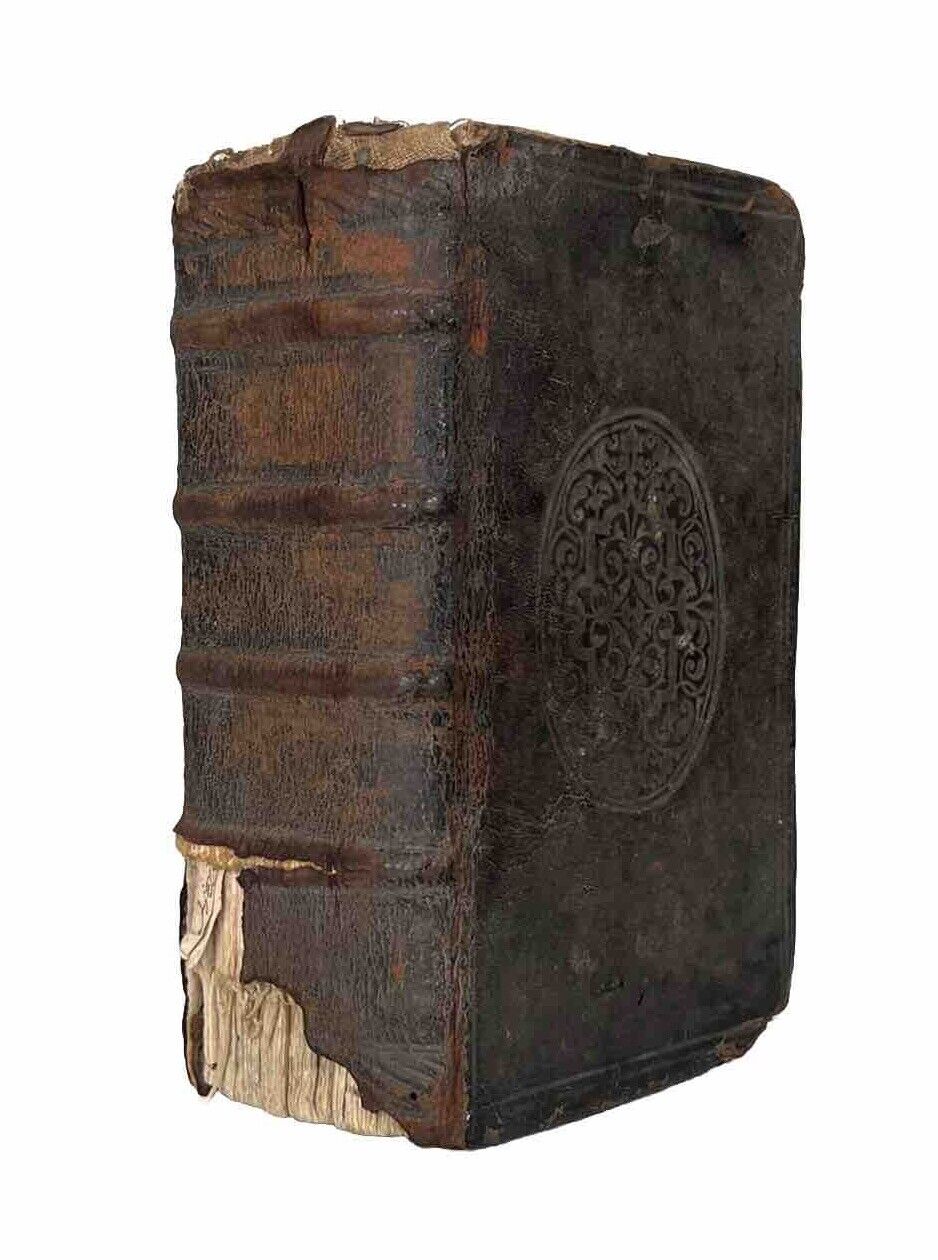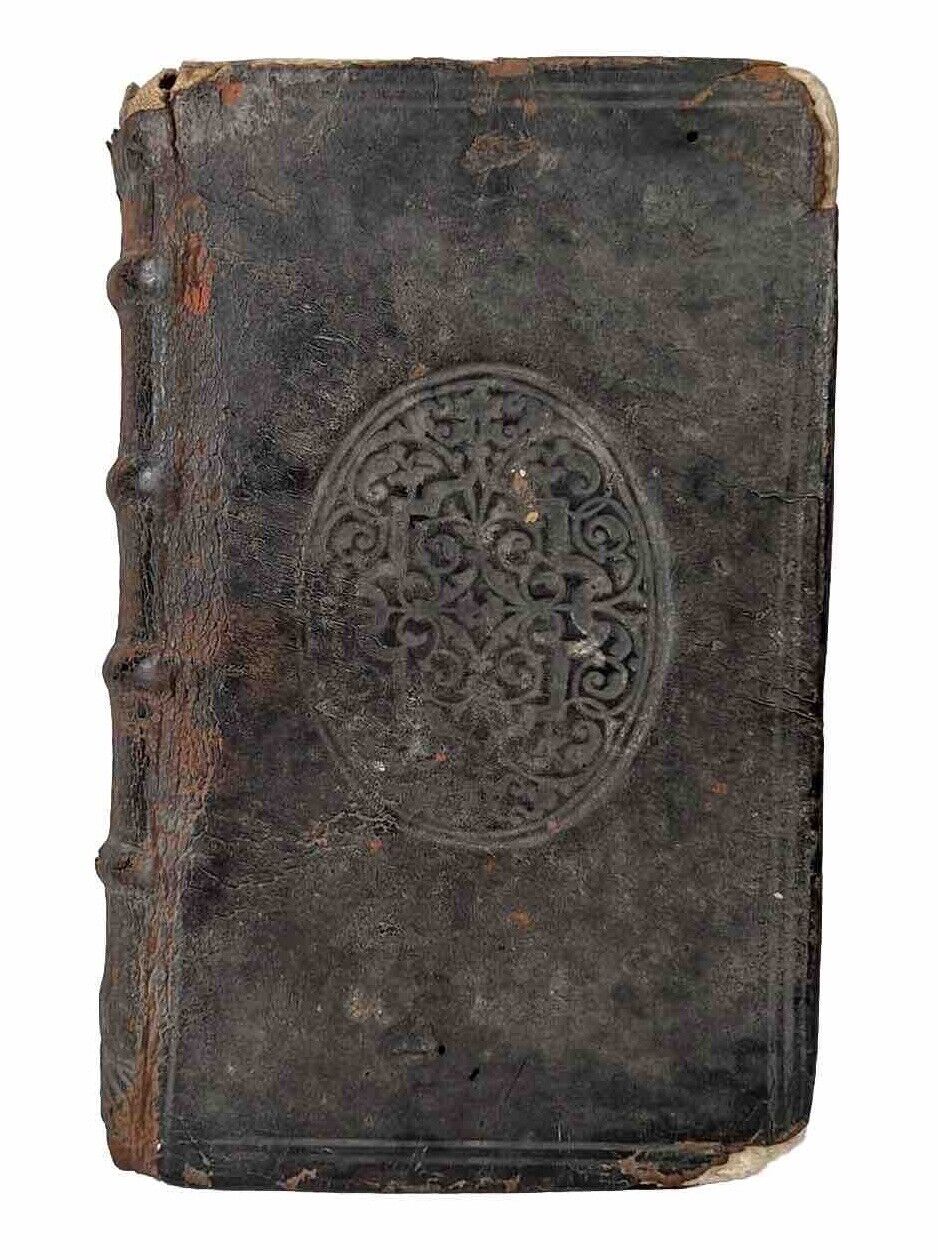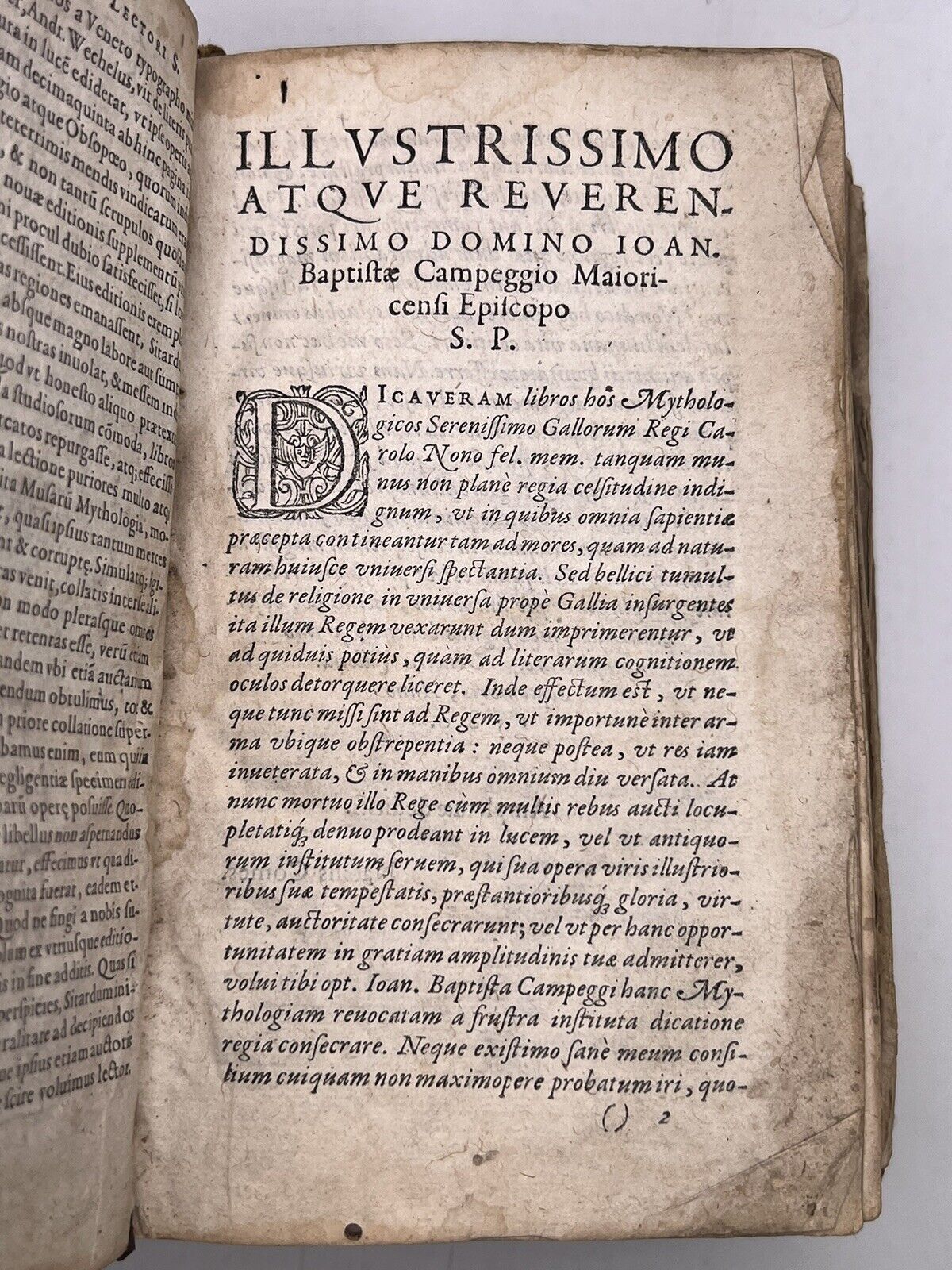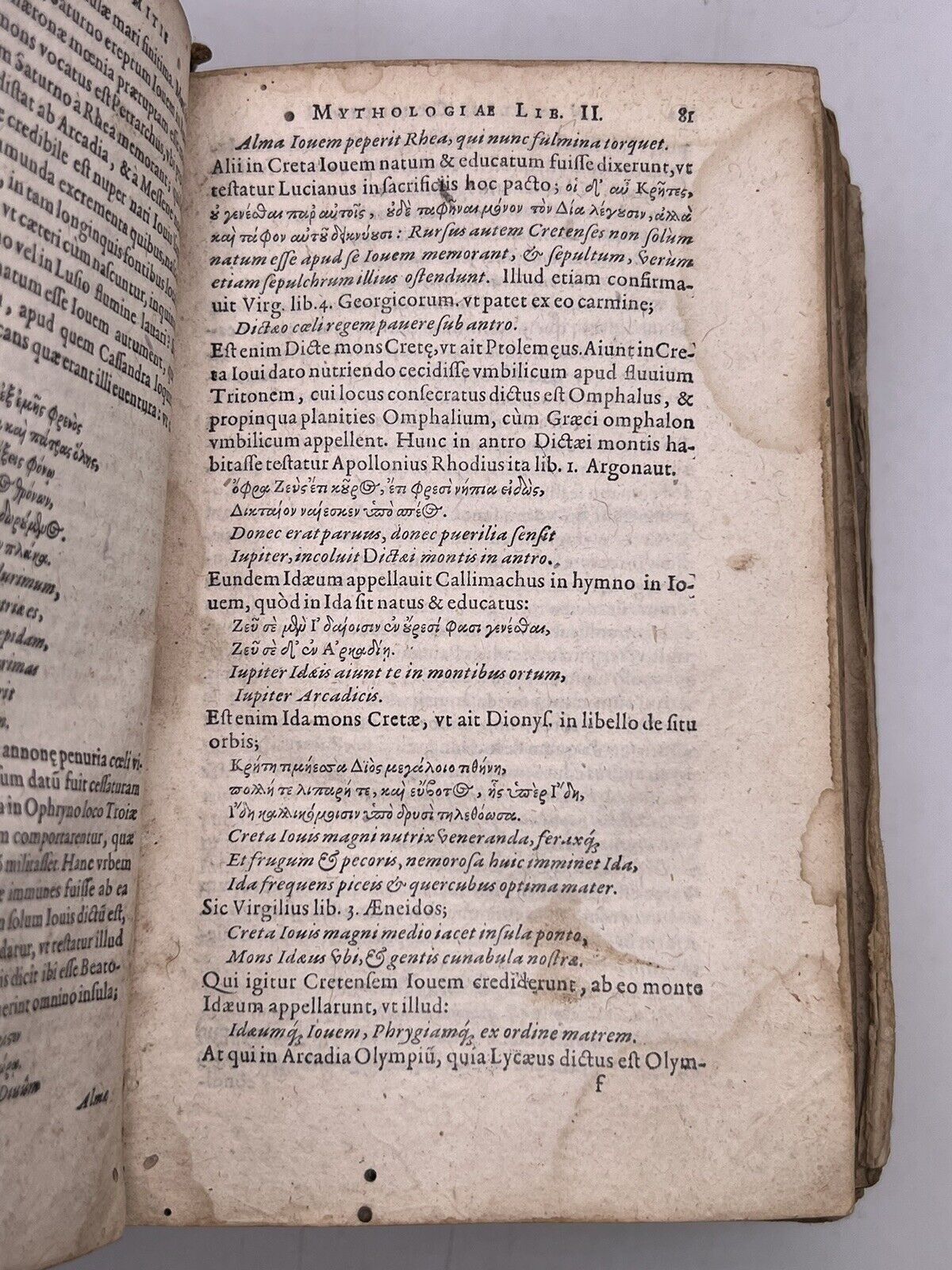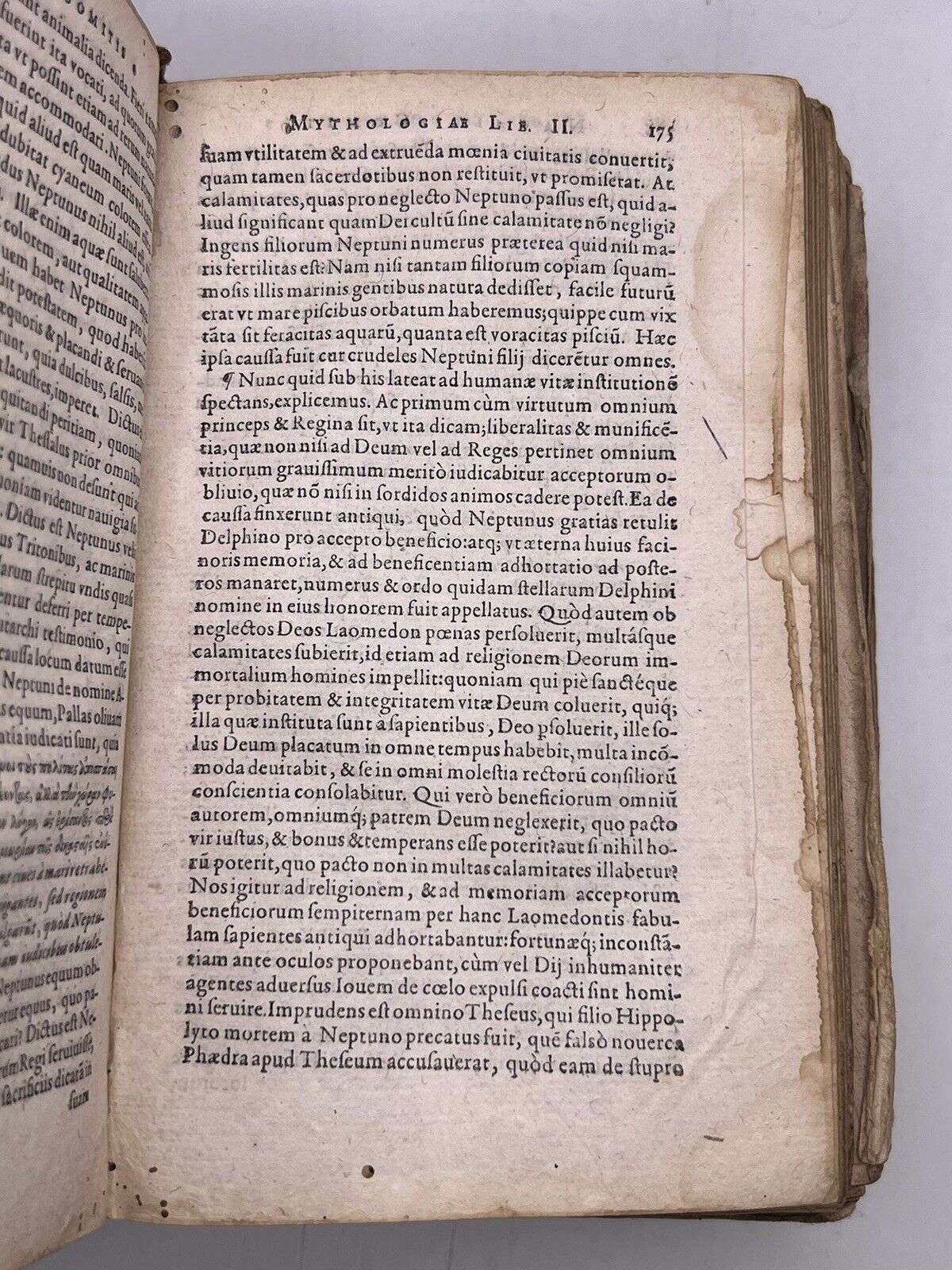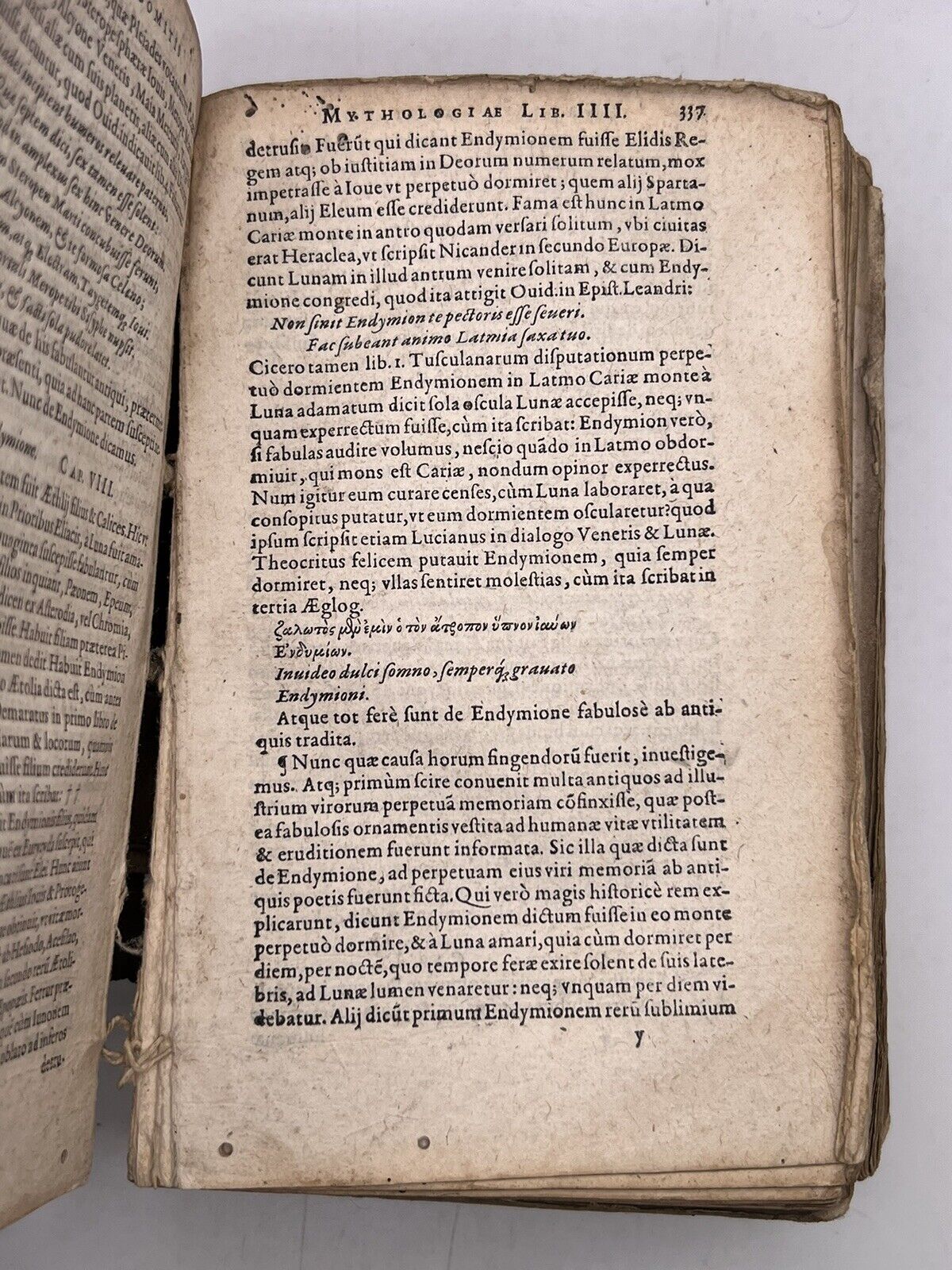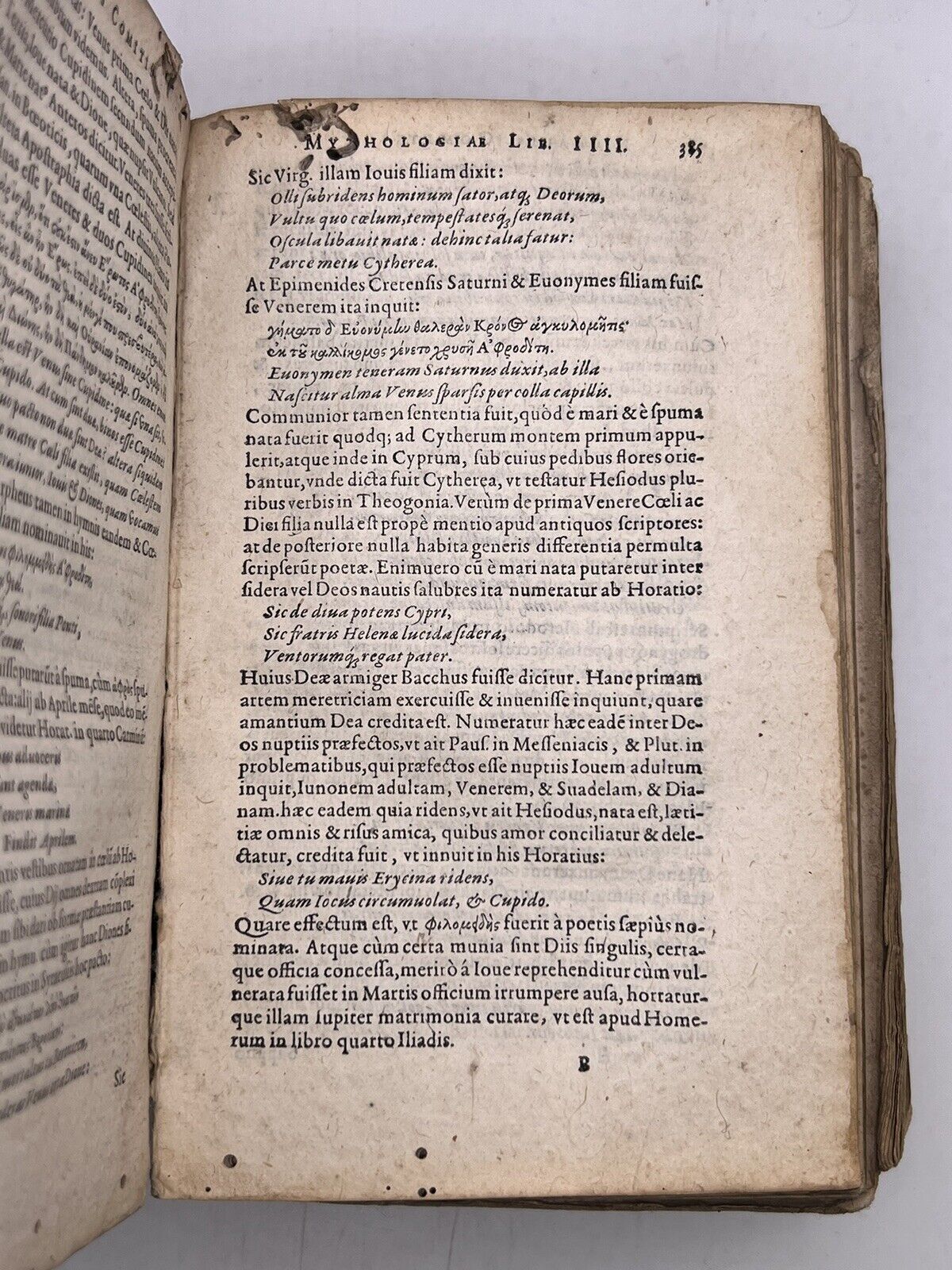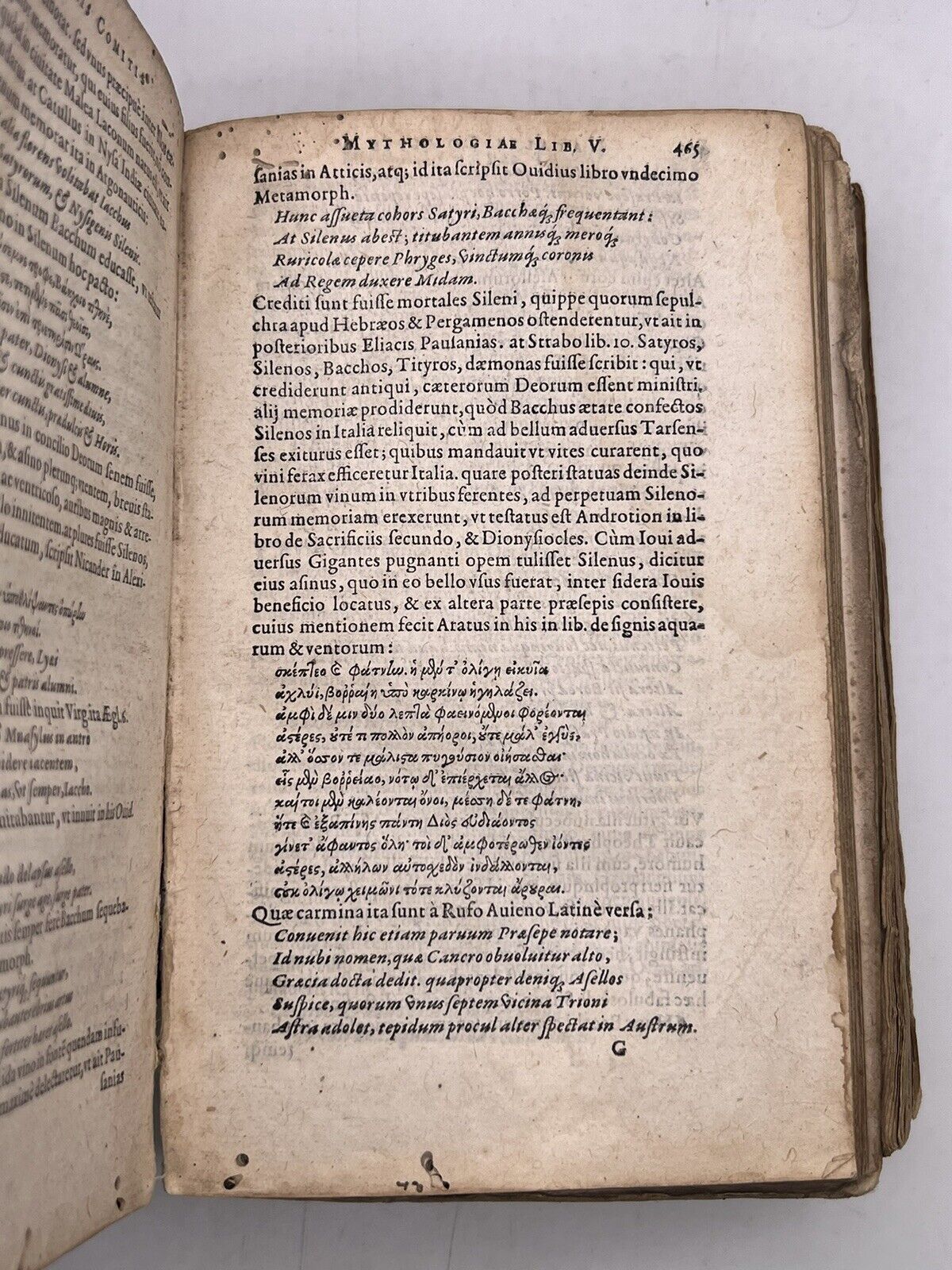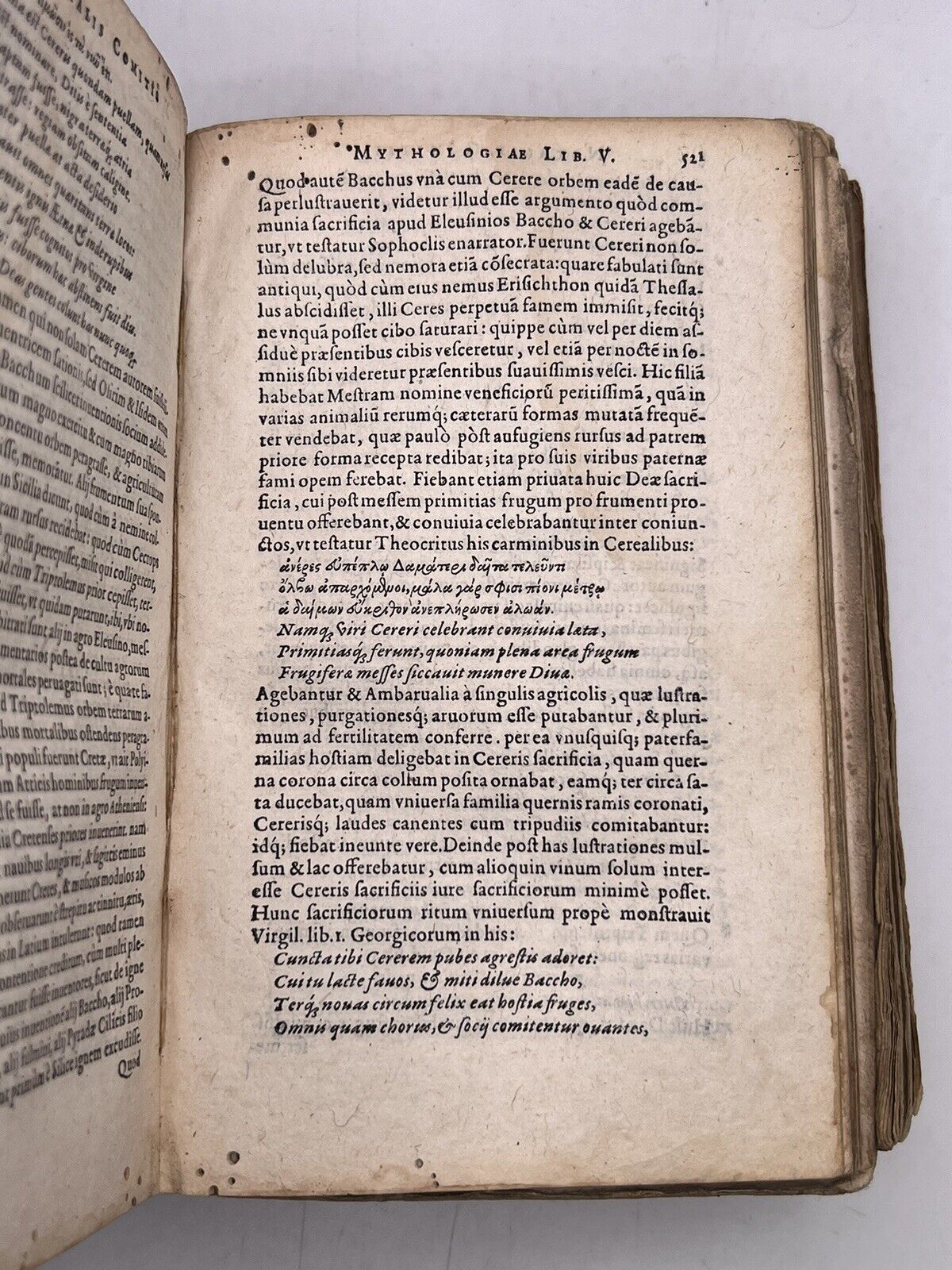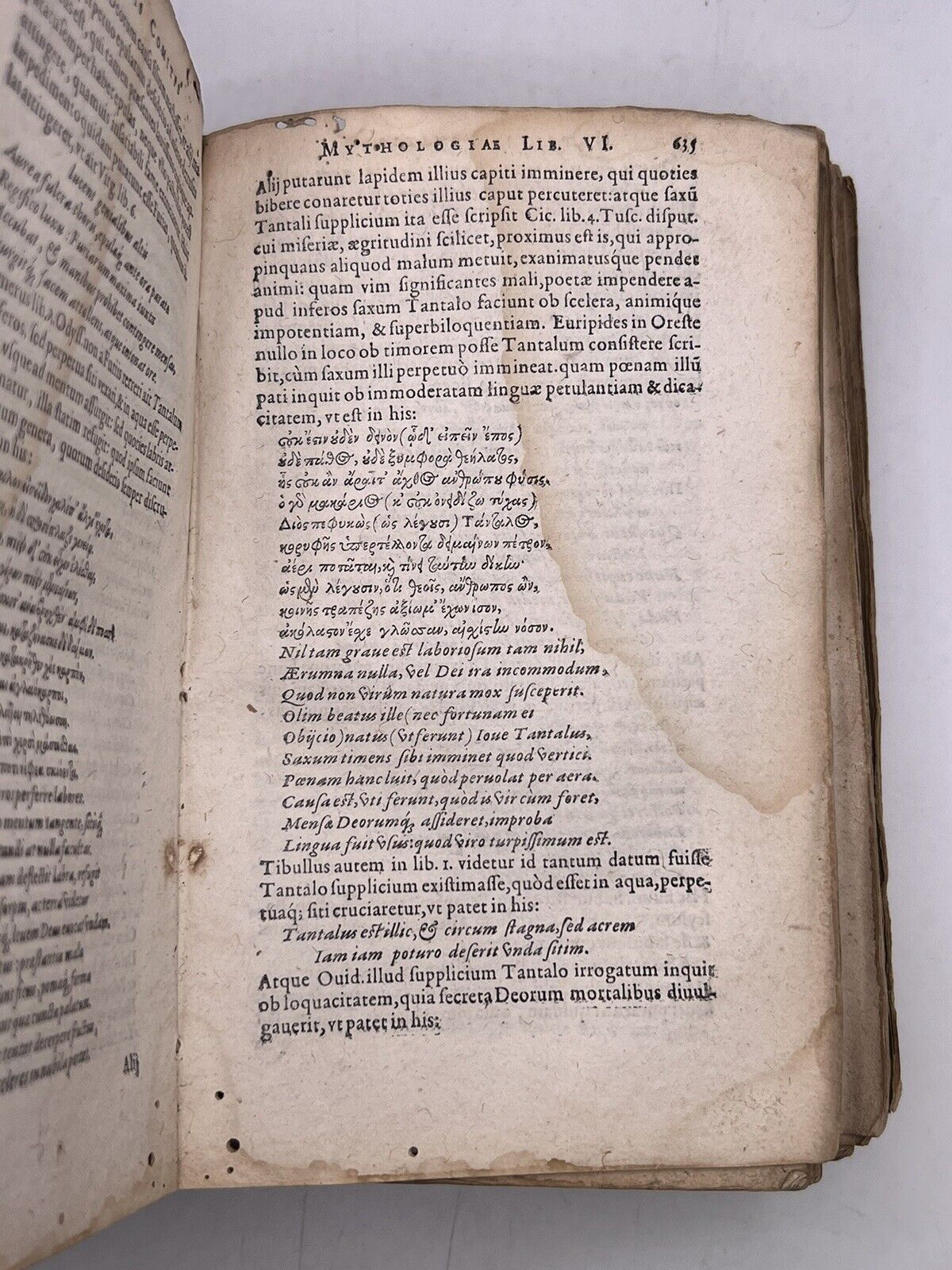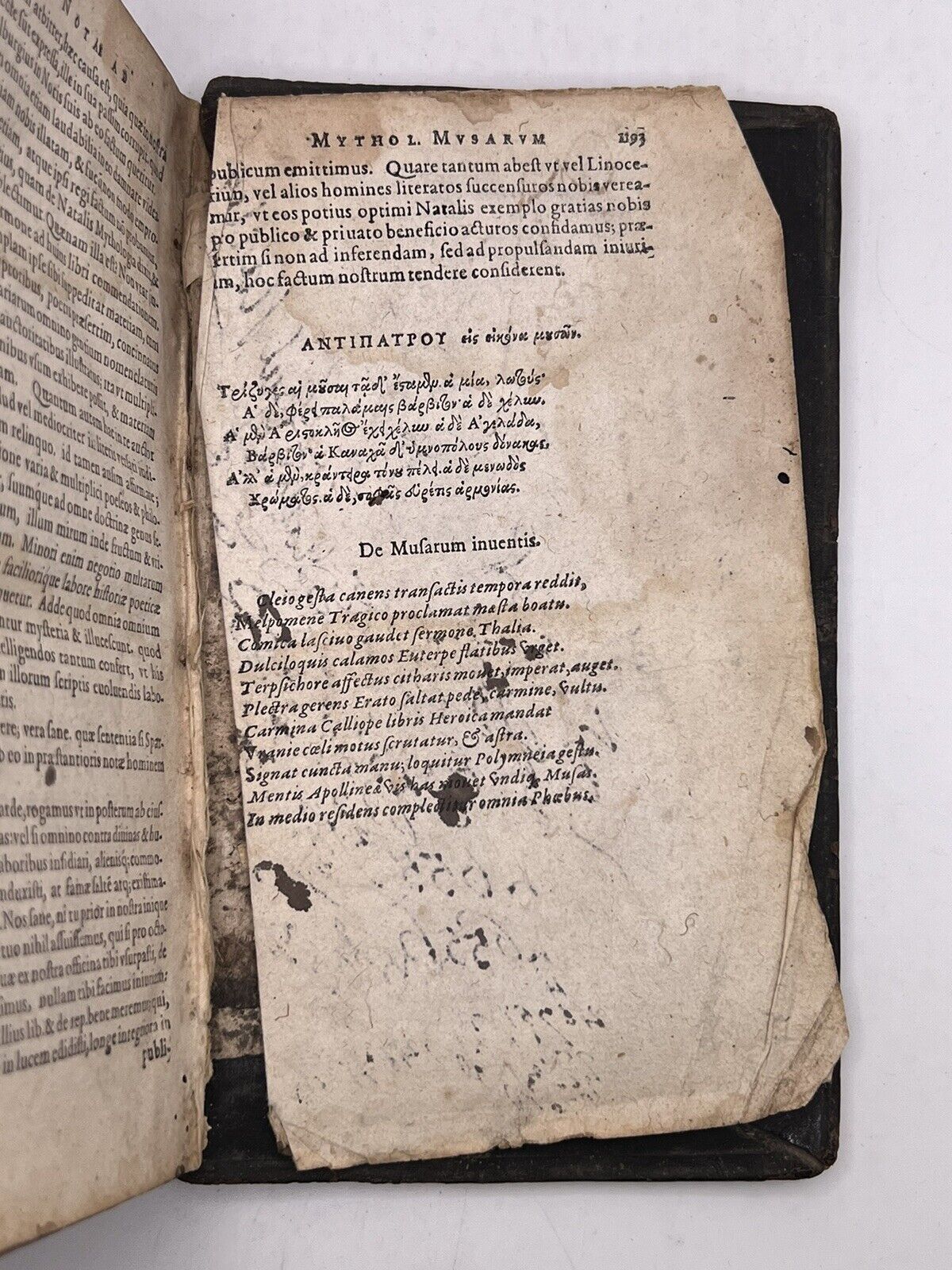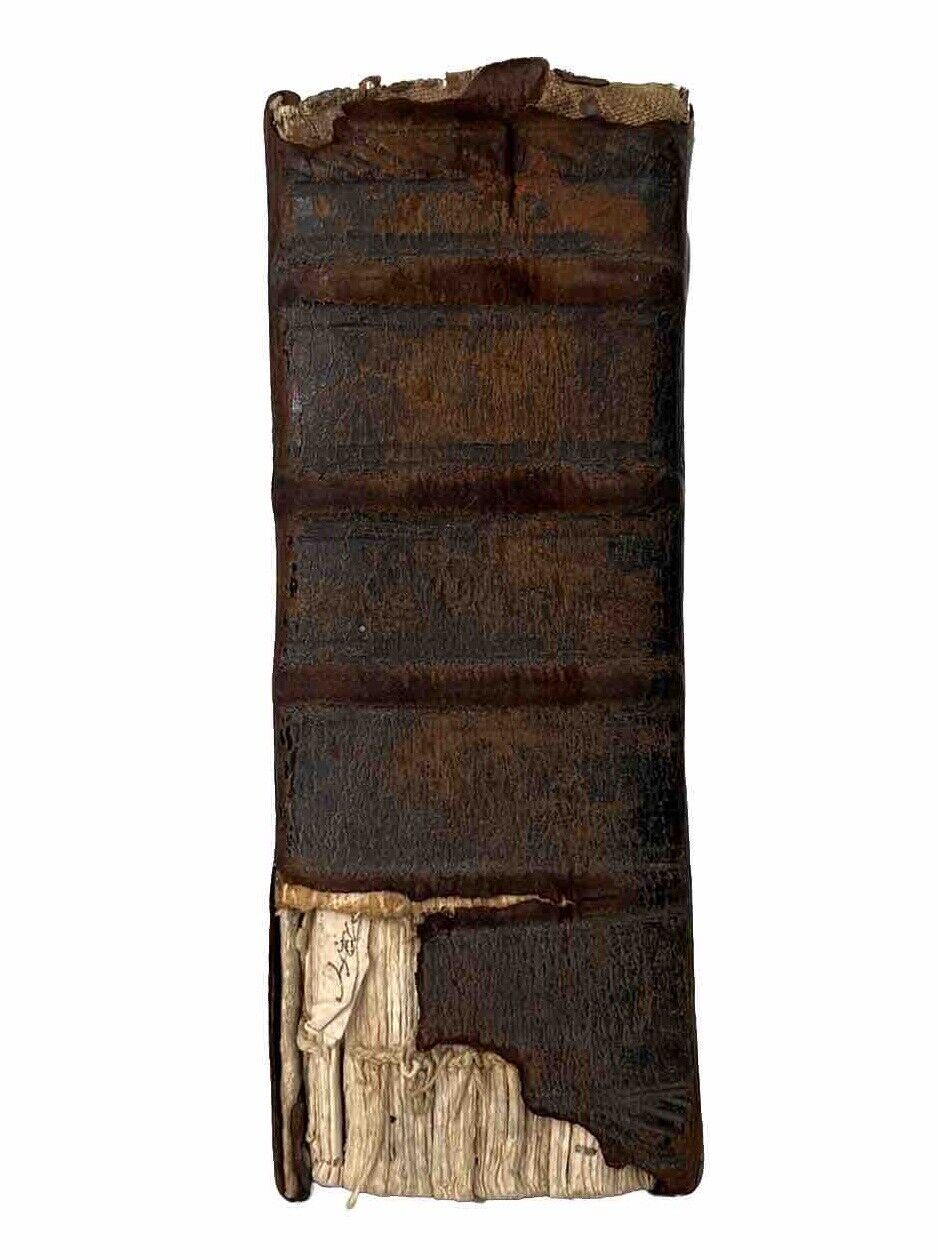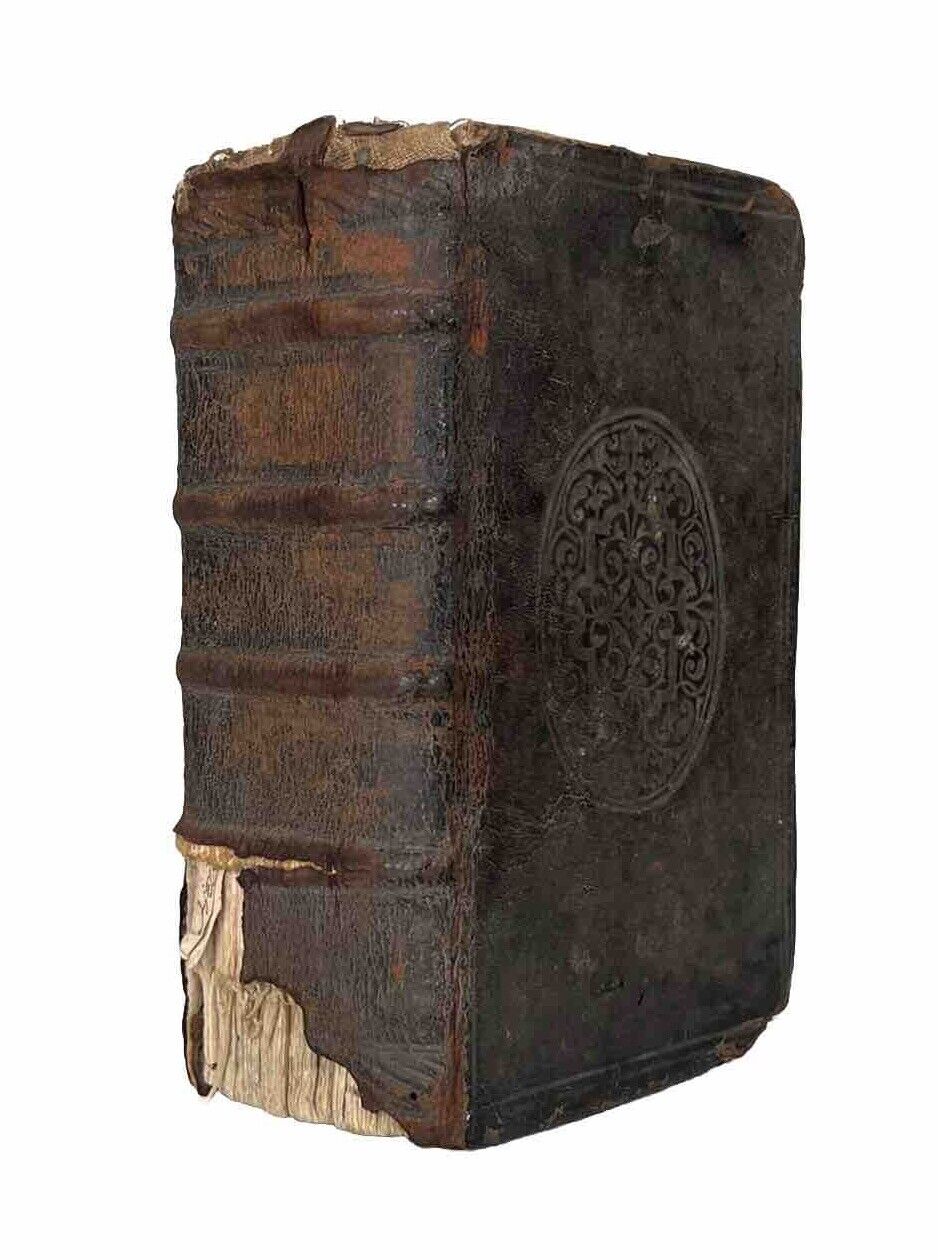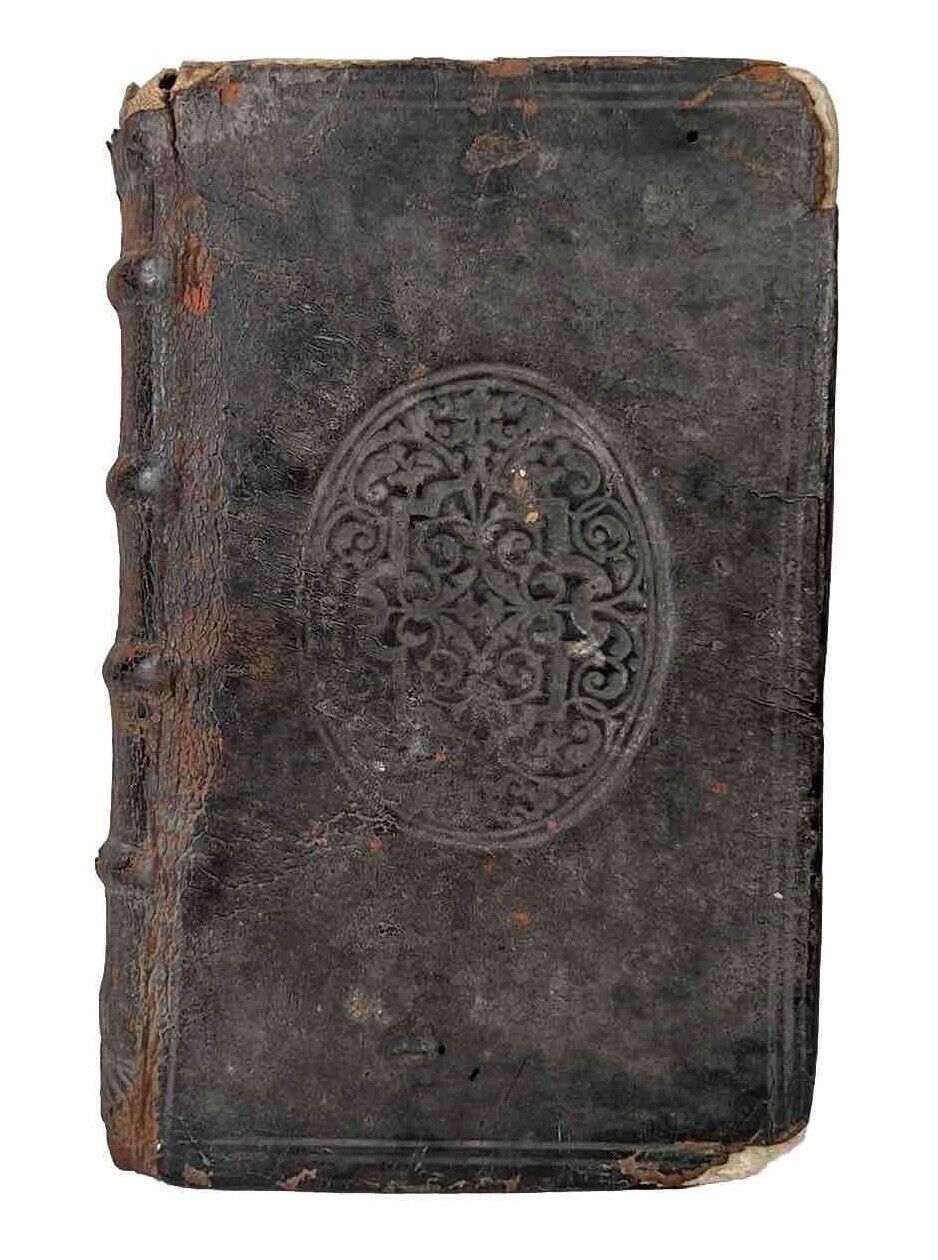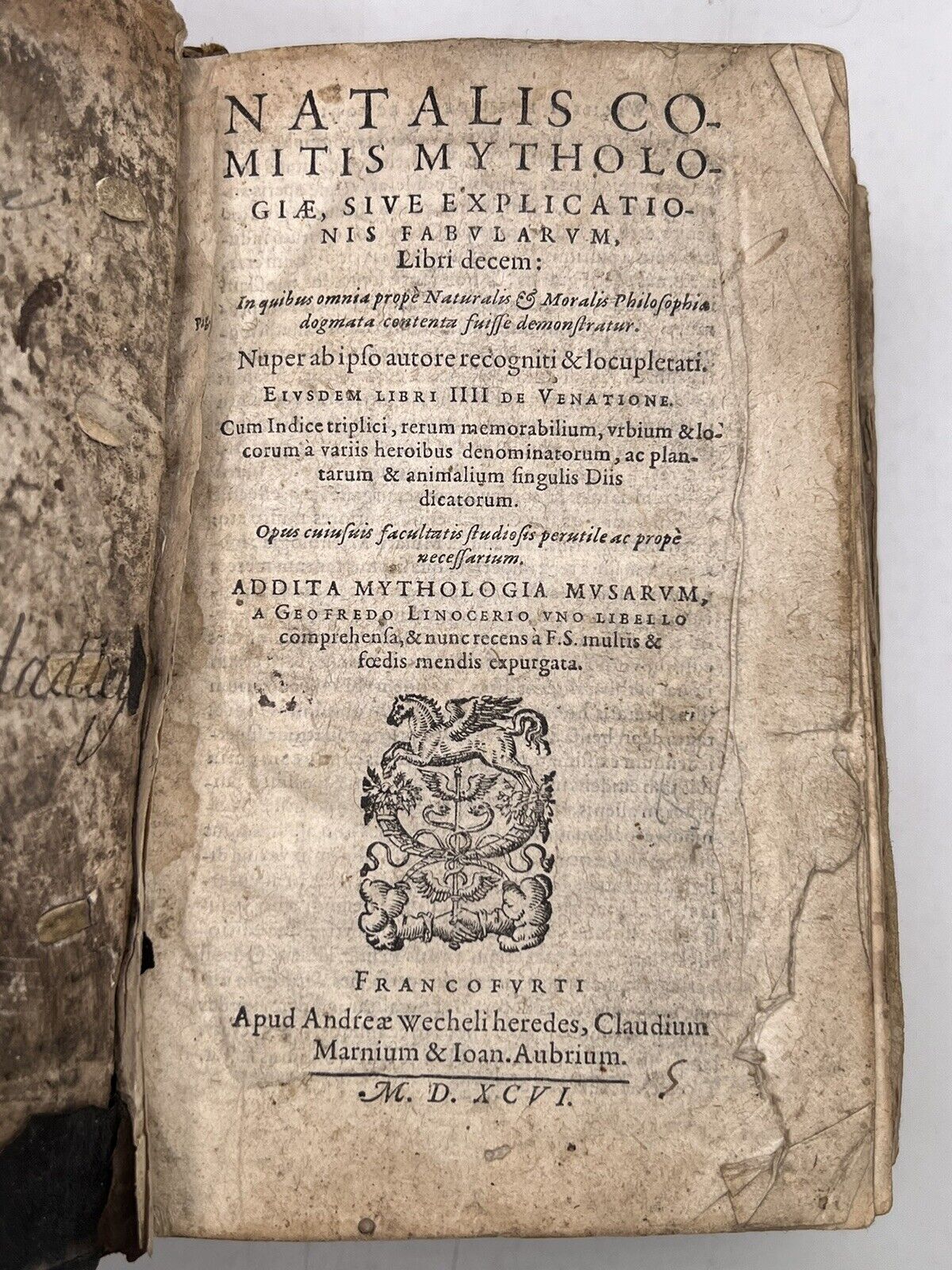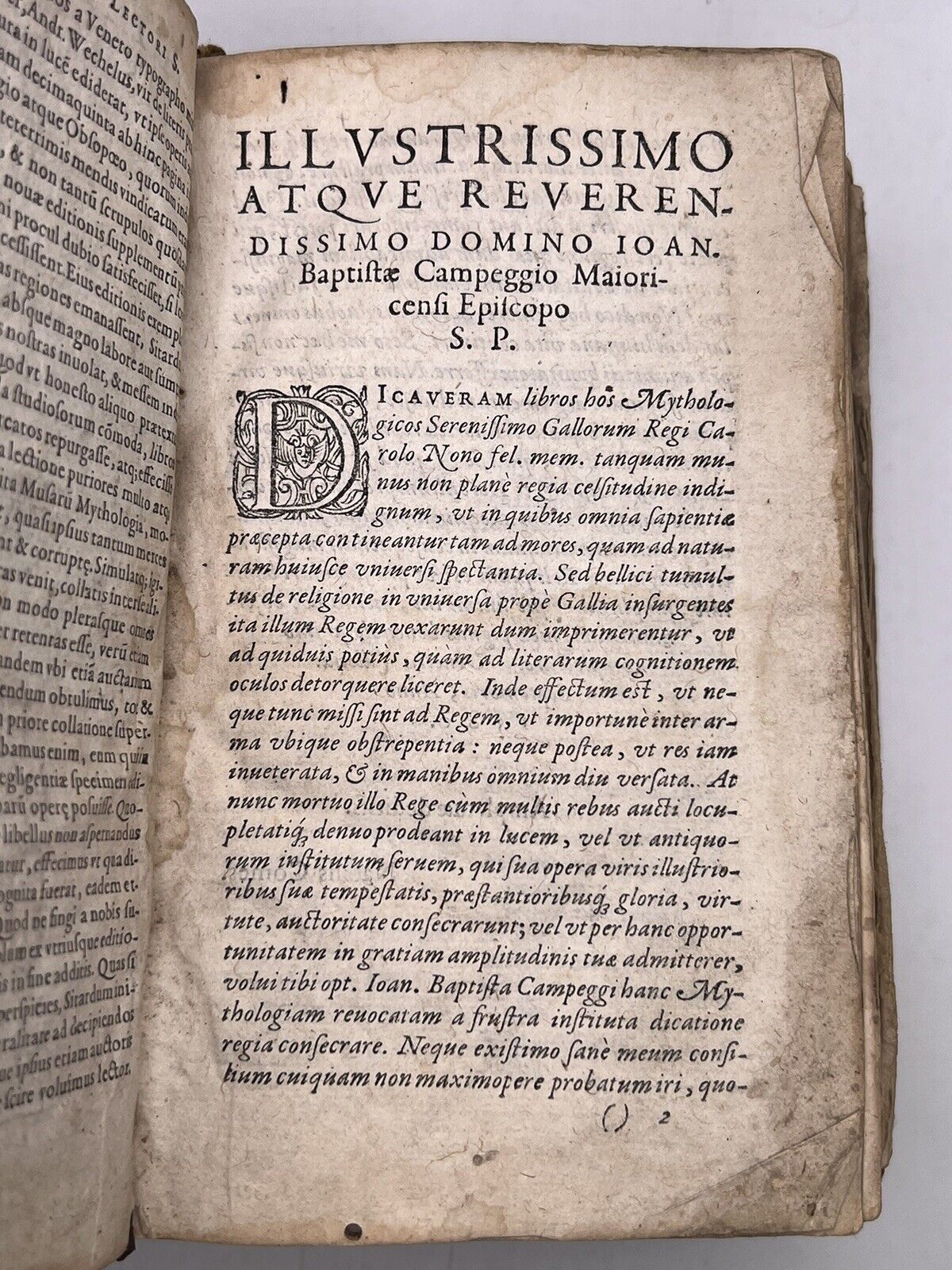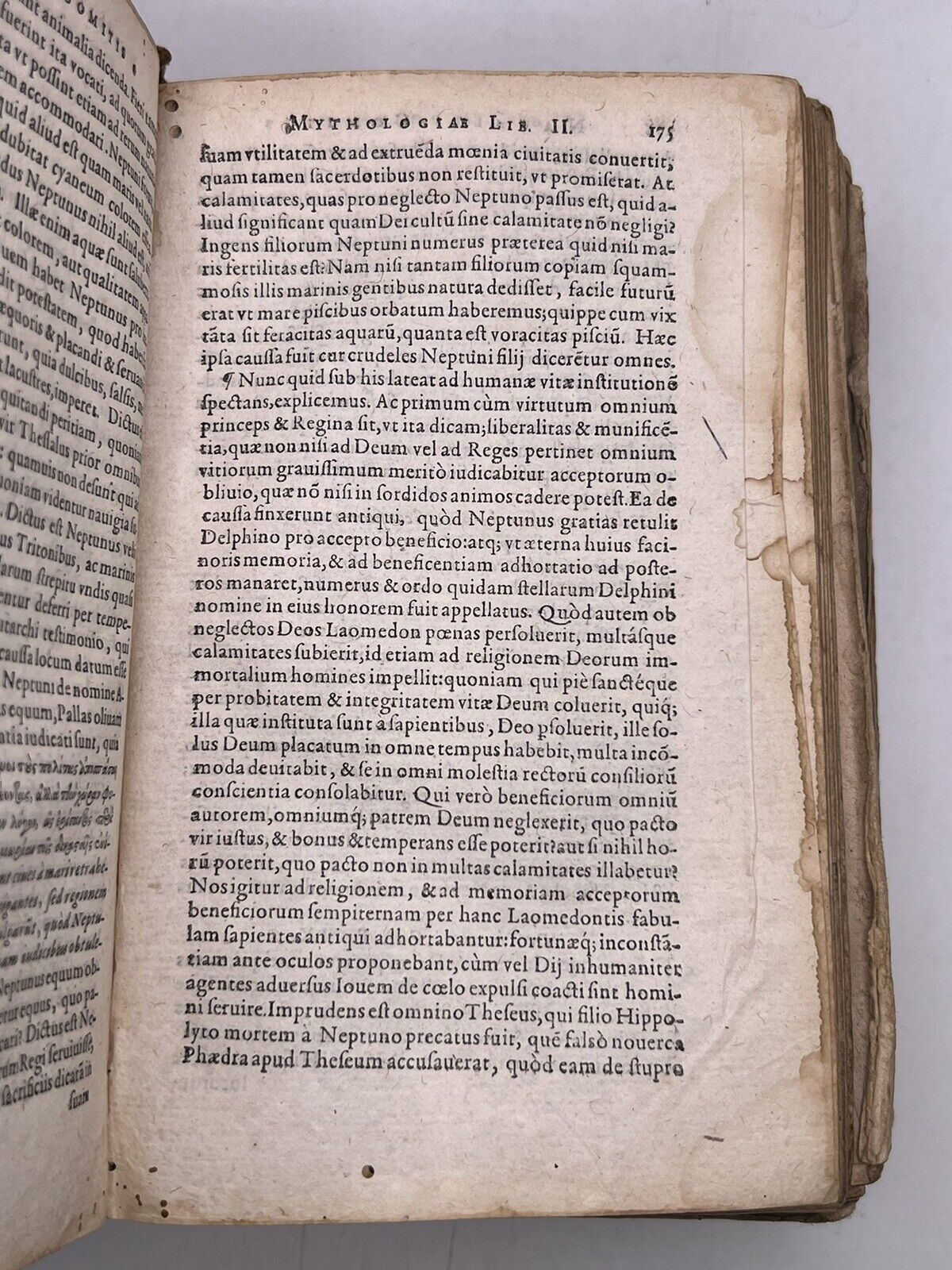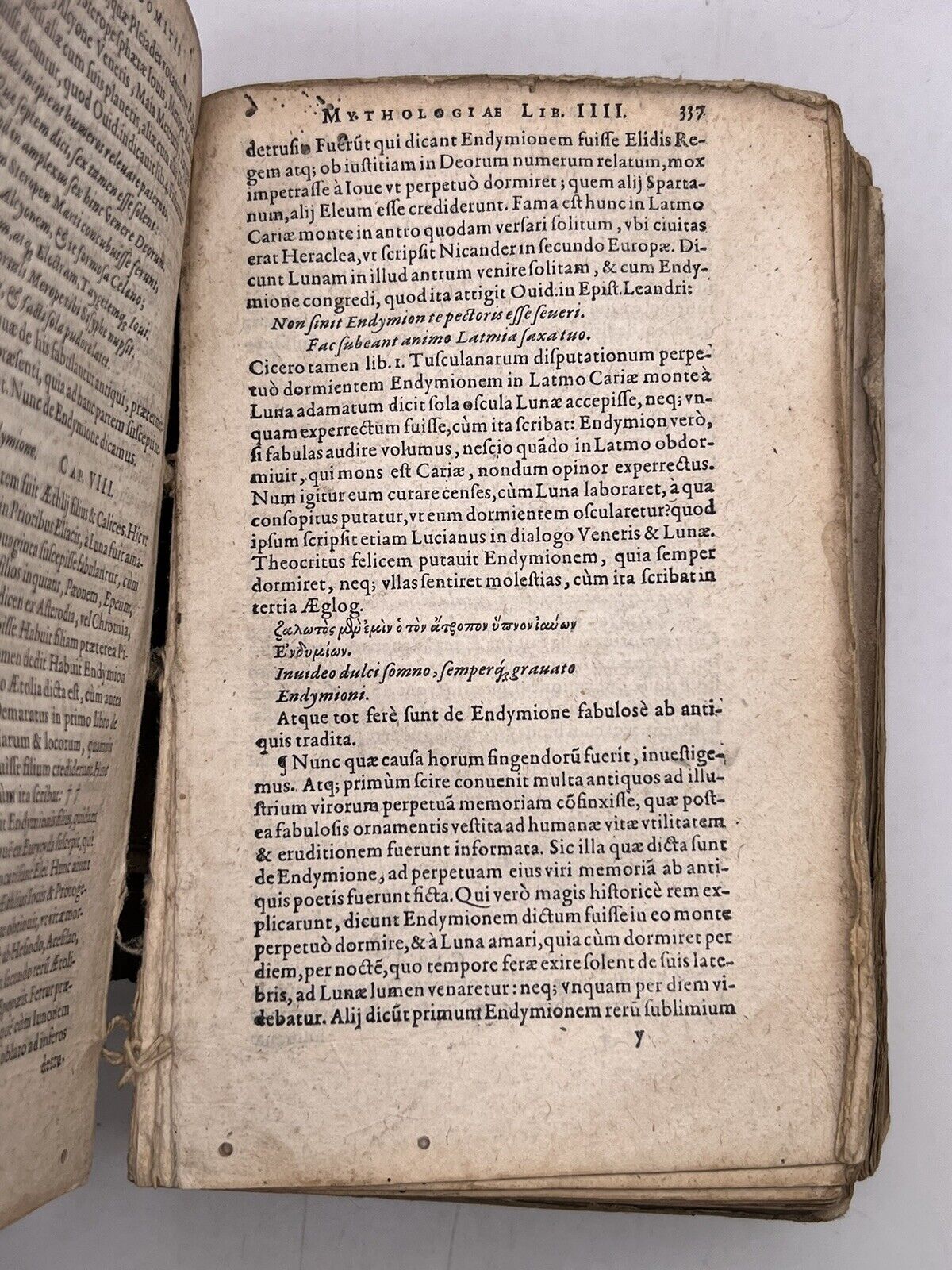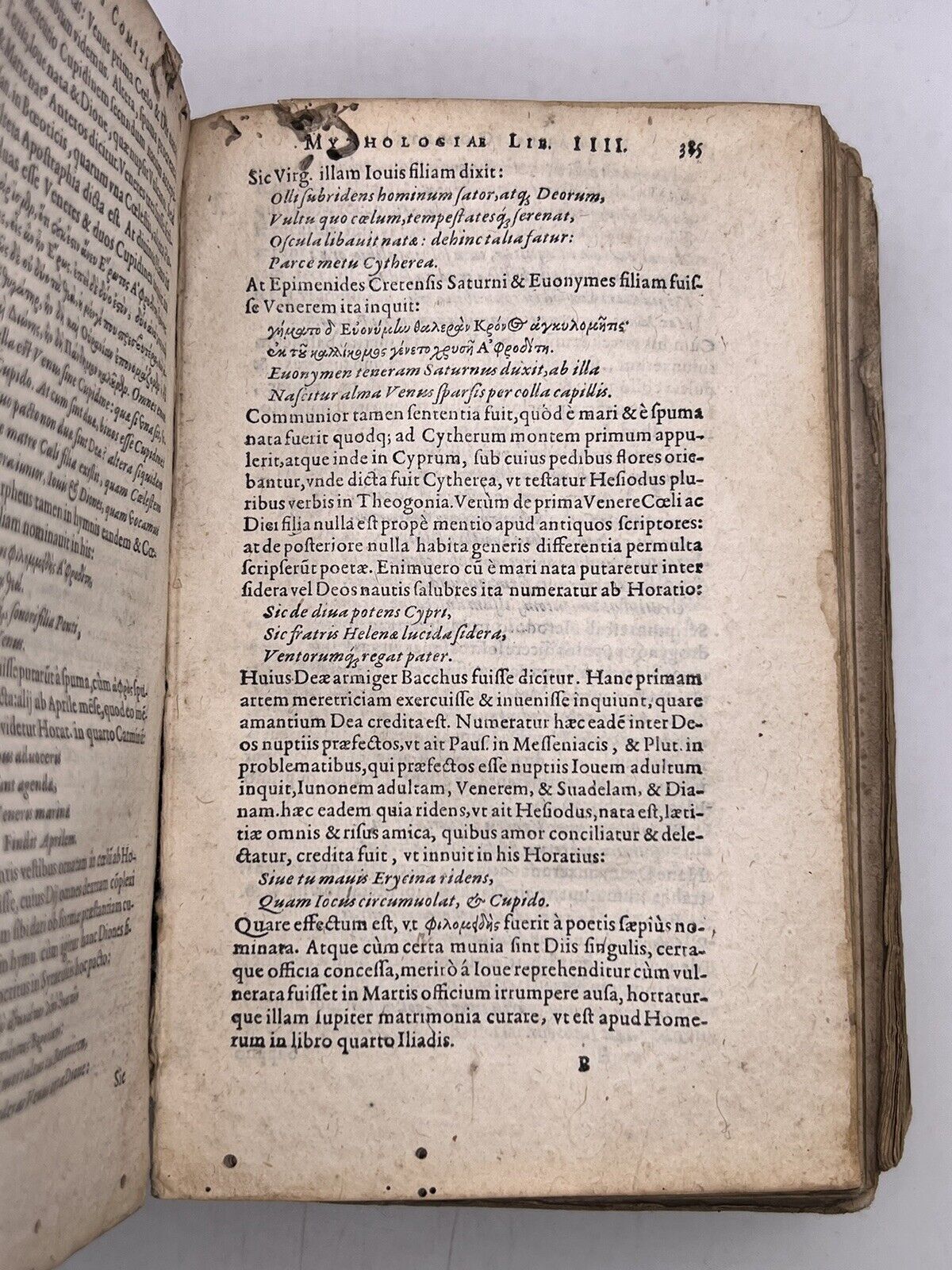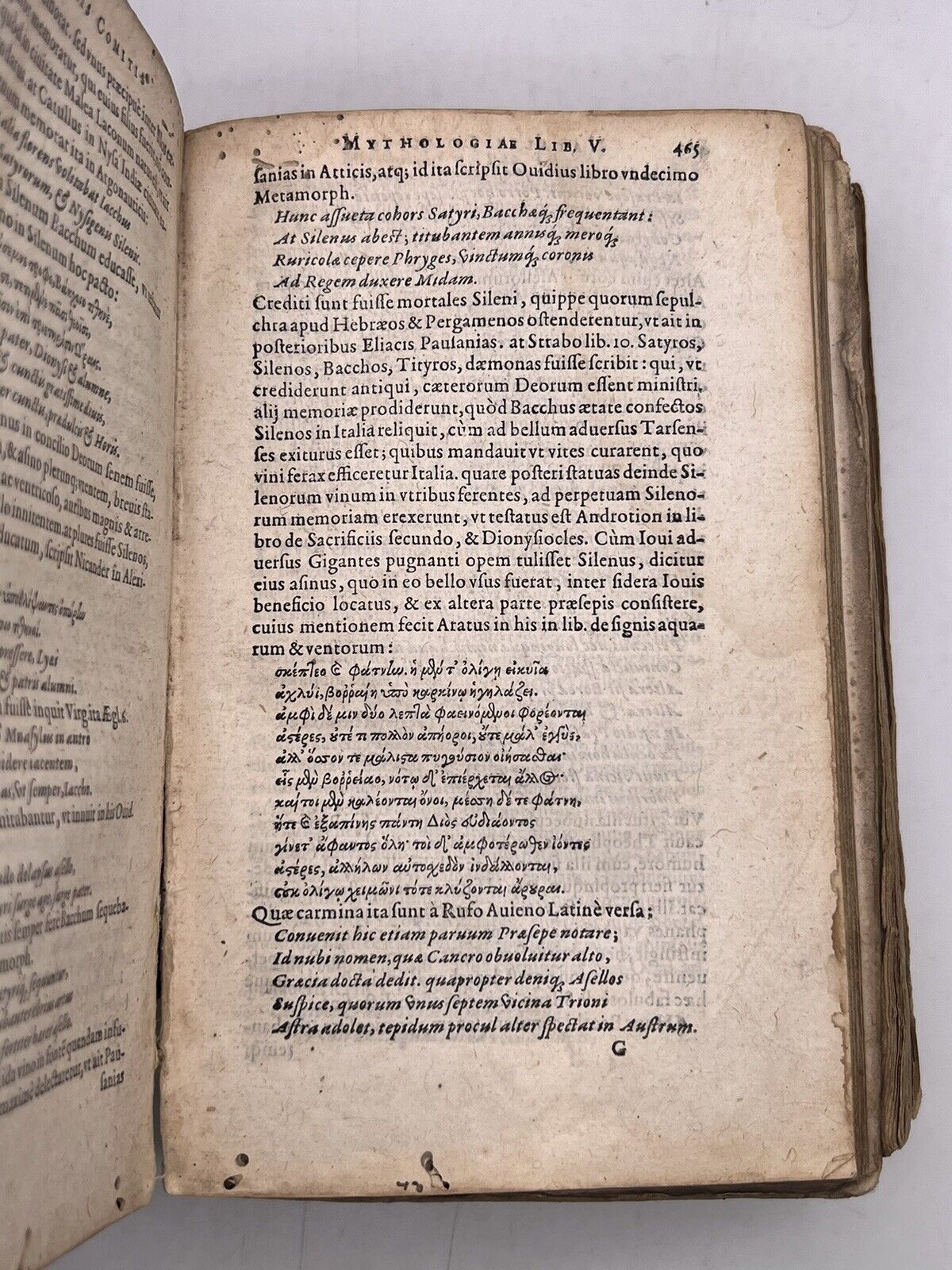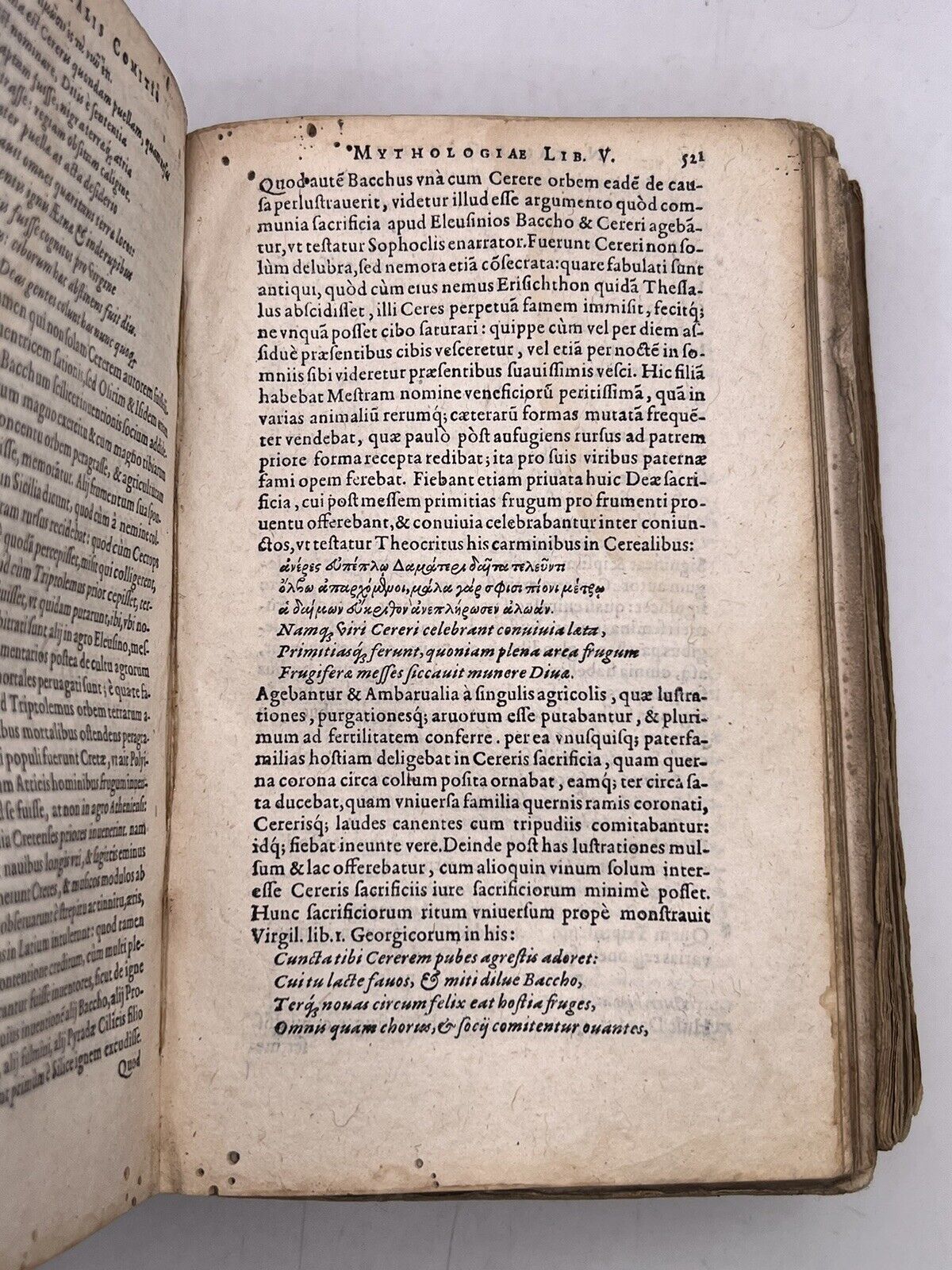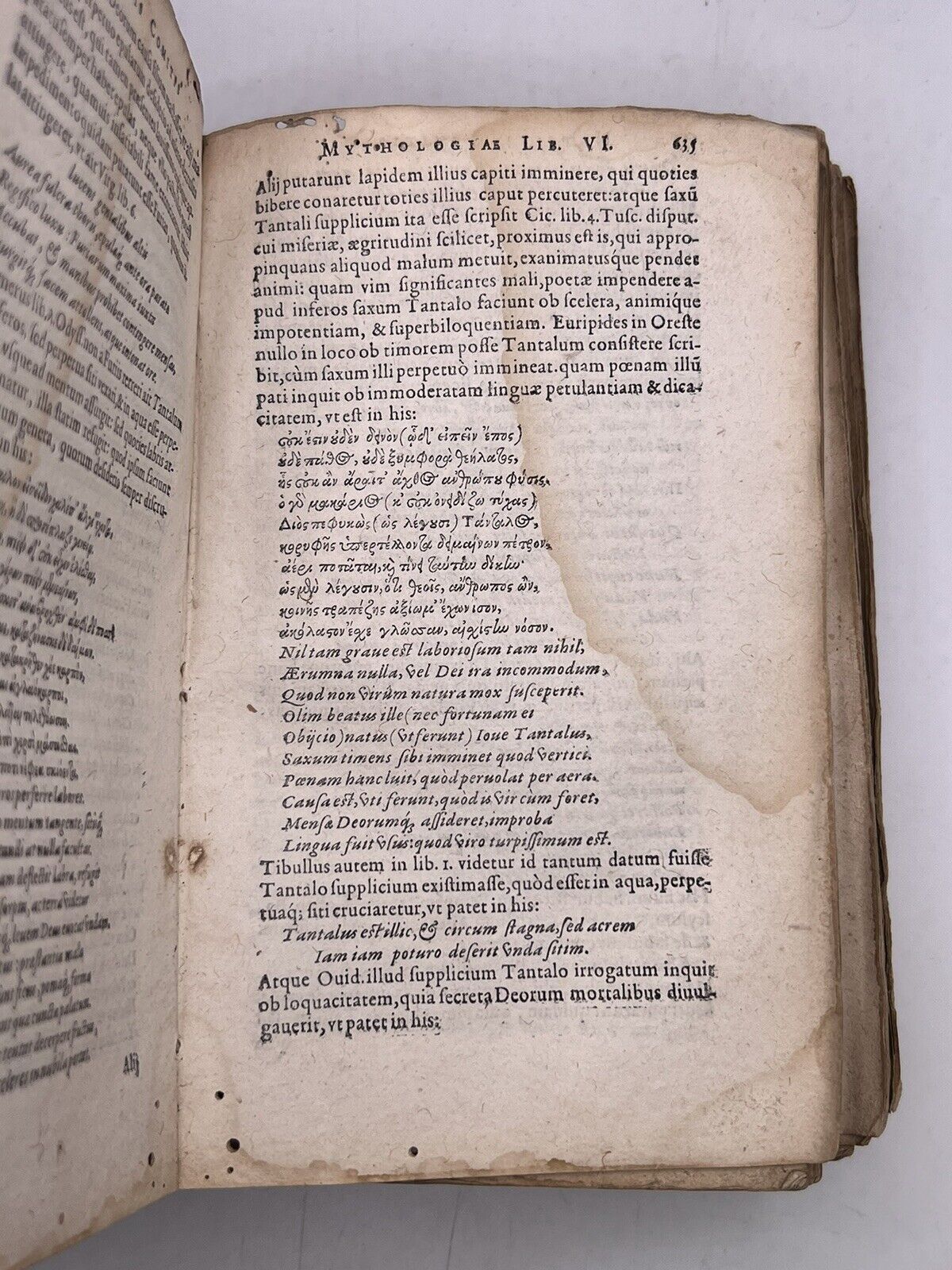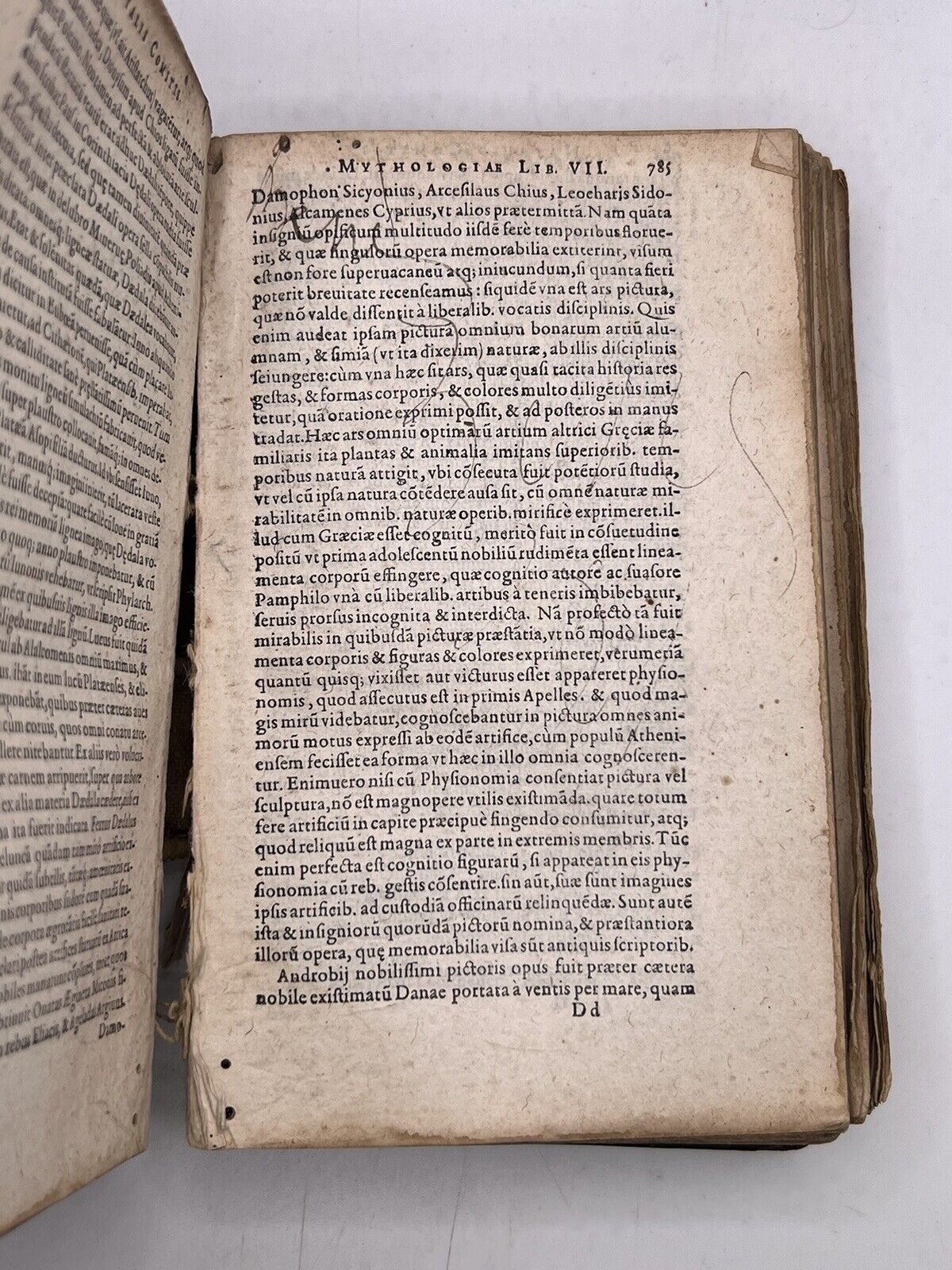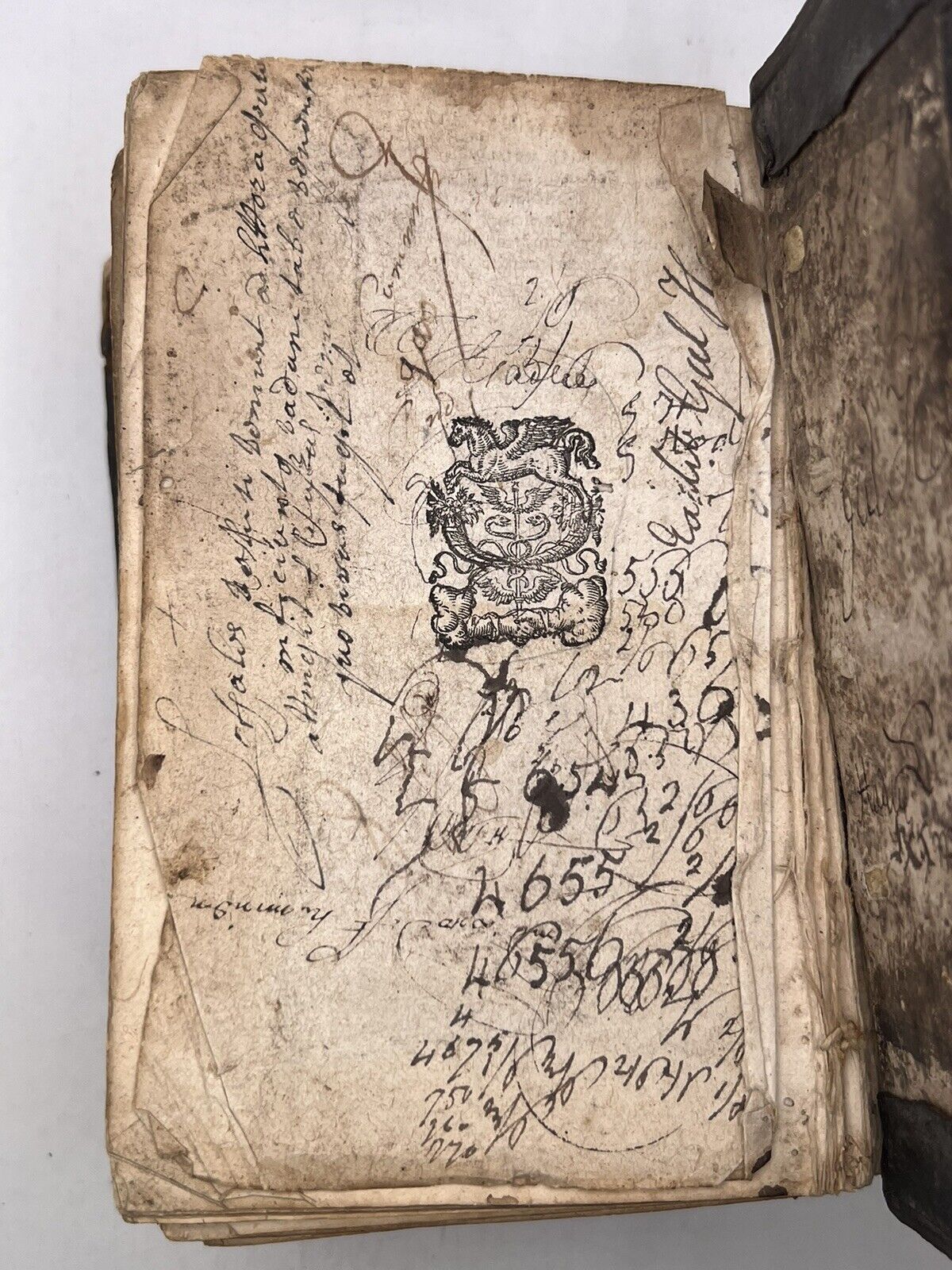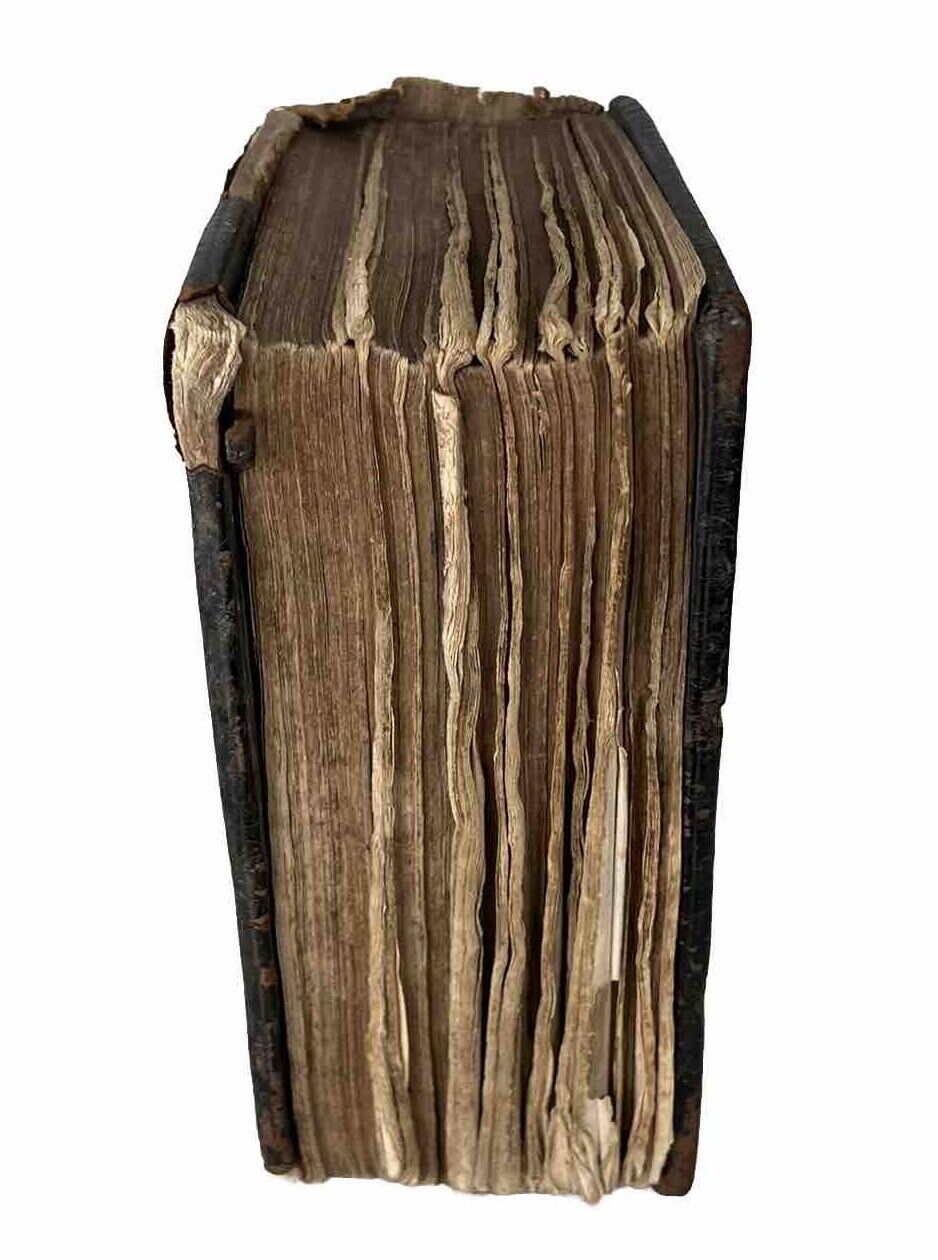The History of Ancient Mythology 1596 Natale Conti
The History of Ancient Mythology 1596 Natale Conti
Couldn't load pickup availability
Natalis Comitis Mythologiae, Sive Explicationis Fabularum, Libri Decem: In Quibus Omnia Prope Naturalis & Moralis Philosophiae Dogmata Contenta Fuisse Demonstratur. Nuper Ab Ipso Autore Recogniti & Locupletati. Eiusdem Libri IIII De Venatione. Cum Indice Triplici, Rerum Memorabilium, Urbium & Locorum A Variis Heroibus Denominatorum, Ac Plantarum & Animalium Singulis Diis Dicatorum. Opus Cuiusuis Facultatis Studiosis Perutile Ac Prope Necessarium. Addita Mythologia Musarum, A Geofredo Linocerio Uno Libello Comprehensa, & Nunc Recens A F.S. Multis & Foedis Mendis Expurgata. Francofurti, Apud Andreae Wecheliheredes, Claudium Marnium & Ioan. Aubrium. MDXCVI.
The Mythology of Natalis Comes, or the Explanation of Myths, in Ten Books: In Which It is Demonstrated That Almost All the Doctrines of Natural and Moral Philosophy Were Contained. Recently Recognised and Enriched by the Author Himself. Also, Four Books of the Hunt by the Same Author. With a Triple Index of Memorable Things, Cities & Places Named After Various Heroes, and of Plants & Animals Dedicated to Each God. A Work Highly Useful and Almost Necessary for Students of Any Faculty. Also Added, The Mythology of the Muses, Comprehended in a Single Book by Geoffrey Linocerius, Now Recently Purged of Many and Gross Errors by F.S. Frankfurt, Published by the Heirs of Andreas Wechel, Claudius Marnius & John Aubrius. 1596.
A RARE EARLY EDITION IN A BEAUTIFUL CONTEMPORARY 16TH CENTURY BINDING OF CONTI'S IMPORTANT HISTORY OF ANCIENT MYTHOLOGY.
-------------------
Natale Conti (Natalis Comes in Latin), was an Italian mythographer, poet, humanist and historian. His major work Mythologiae, ten books written in Latin, was first published in Venice in 1567 and became a standard source for classical mythology in later Renaissance Europe. It was reprinted in numerous editions; after 1583, these were appended with a treatise on the Muses by Geoffroi Linocier, also included in our edition. By the end of the 17th century, his name was virtually synonymous with mythology: a French dictionary in defining the term mythologie noted that it was the subject written about by Natalis Comes.
Conti thought that the characters in myth were idealised human beings, and that the stories contained philosophical insights syncretised through the ages and veiled so that only "initiates" would grasp their true meaning. His interpretations were often shared by other Renaissance writers, notably by Francis Bacon in his long-overlooked De Sapientia Veterum, 1609. In some cases, his interpretation might seem commonplace even in modern mythology: for Conti, the centaur represents "man's dual nature," both animal passions and higher intellectual faculties. Odysseus, for instance, becomes an Everyman whose wanderings represent a universal life cycle.
This archetypal approach to ancient mythology has seen a recent resurgence with commentators such as Carl Jung and Jordan Peterson.
-------------------
Size: 110 x 175 mm (approx.)
Condition:
[t.p. (*1), *2-*8, pp.1-1137, 54pp. (index), pp.1138-1193, 1pp. (printer's device)]
Contemporary full calf with blindstamped boards, rubbed with some loss of the backstrip at the foot and less so at the head. Joints secure with both boards attached to the binding, though with some separation of the backstrip and the page block which is visible when the binding is opened from the rear. Shelf and edge wear as typical with some losses at corners. No shelf lean. Some gatherings partially detached resulting in non-uniformity to the page edges. Binder's waste visible at the verso of the title page, not lacking any leaves in the collation prior to this according to WorldCat. Some ink ownership inscriptions to both inner boards of varying date, some being quite early. Lots of ink inscriptions to the final page (printer's device), largely illegible, and in multiple hands. Last leaf detached. The odd word of marginalia throughout or near contemporary underlining, else the text block is largely clean, the odd bit of damp staining at the edges and some wormhole tracks at the head of page block affecting the majority of it but without loss of sense to text. A rare work in a lovely 16th century binding.
[OCLC 12048576, 1015100752, 1336901557, 314652863, 51601922].
